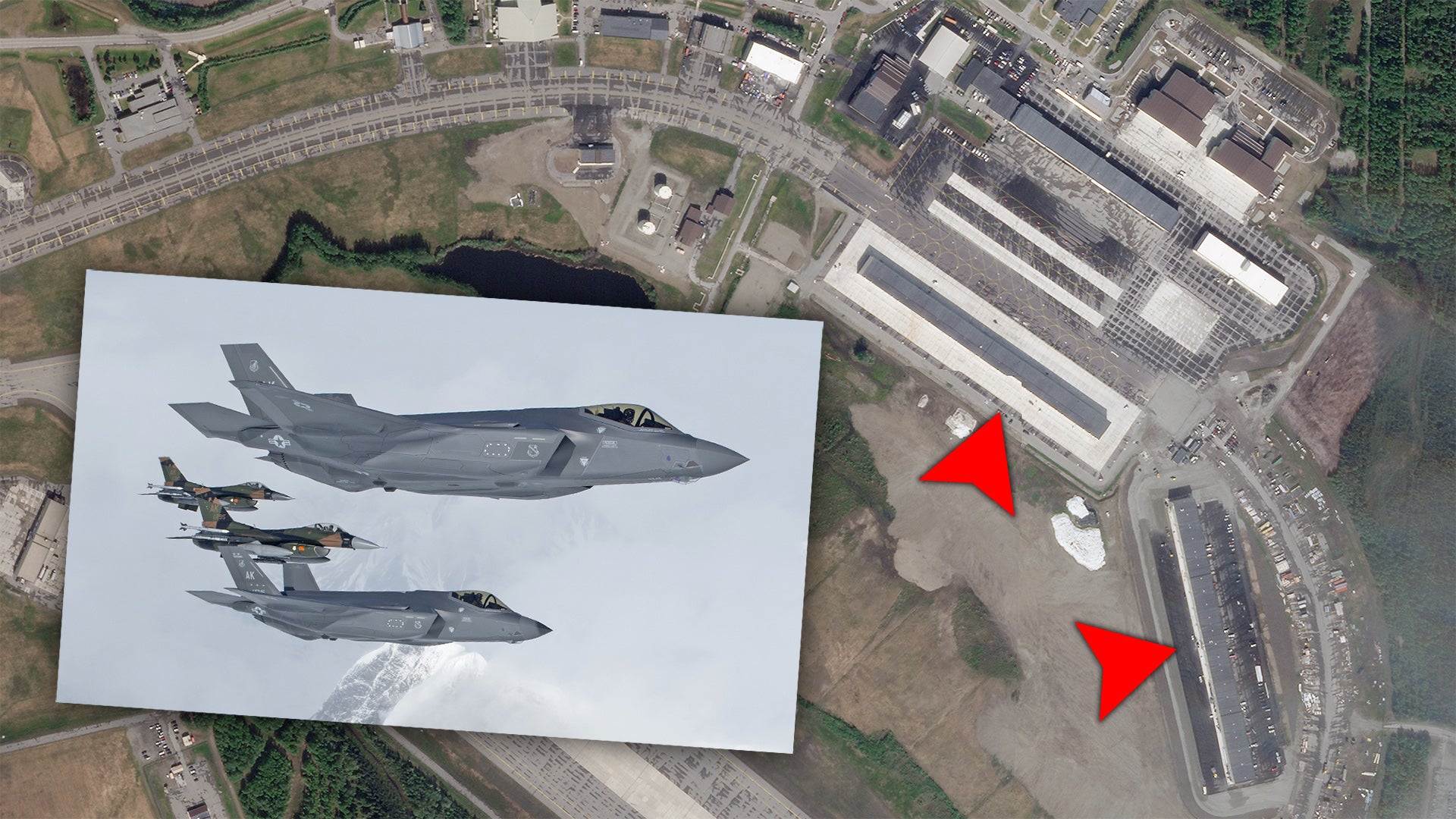The arrival of the first pair of Lockheed Martin F-35A Lightning IIs at Eielson Air Force Base on Apr. 21, 2020, was significant on many levels. This remote installation is located 26 miles southeast of Fairbanks in the interior of Alaska and about 110 miles south of the Arctic Circle. The installation has received huge funding over the past three years to create a massive secure enclave for its new stealthy inhabitants. While the sheer amount of work that has been conducted at Eielson to bring the F-35 into the arsenal of the Pacific Air Forces is highly evident, the strategic impact on an increasingly important region that the rejuvenated fighter wing will have cannot be understated.
The resident 354th Fighter Wing hasn’t been combat-coded since 2007 when its A-10 Thunderbolt IIs were redistributed to other units. Since then, Eielson has operated a squadron of aggressor F-16s, which provide support for the resident Red Flag Alaska exercise and for the F-22 Raptors based at Joint Base Elmendorf-Richardson, near Anchorage. Eielson also supports the 168th Air Refueling Group, part of the Alaska Air National Guard, which operates KC-135Rs in support of Pacific Air Forces (PACAF) operations.
Eielson will be home to the U.S. Air Force’s second operational active-duty F-35 wing, the first being the 388th Fighter Wing at Hill Air Force Base in Utah. This emphasizes the strategic importance of Alaska. The 354th will be home to a pair of Lightning squadrons that will operate 54 of the Low observable (LO) stealth fighters by the time deliveries to the base are complete. This target was initially scheduled for December 2021, but is now set for early 2022.
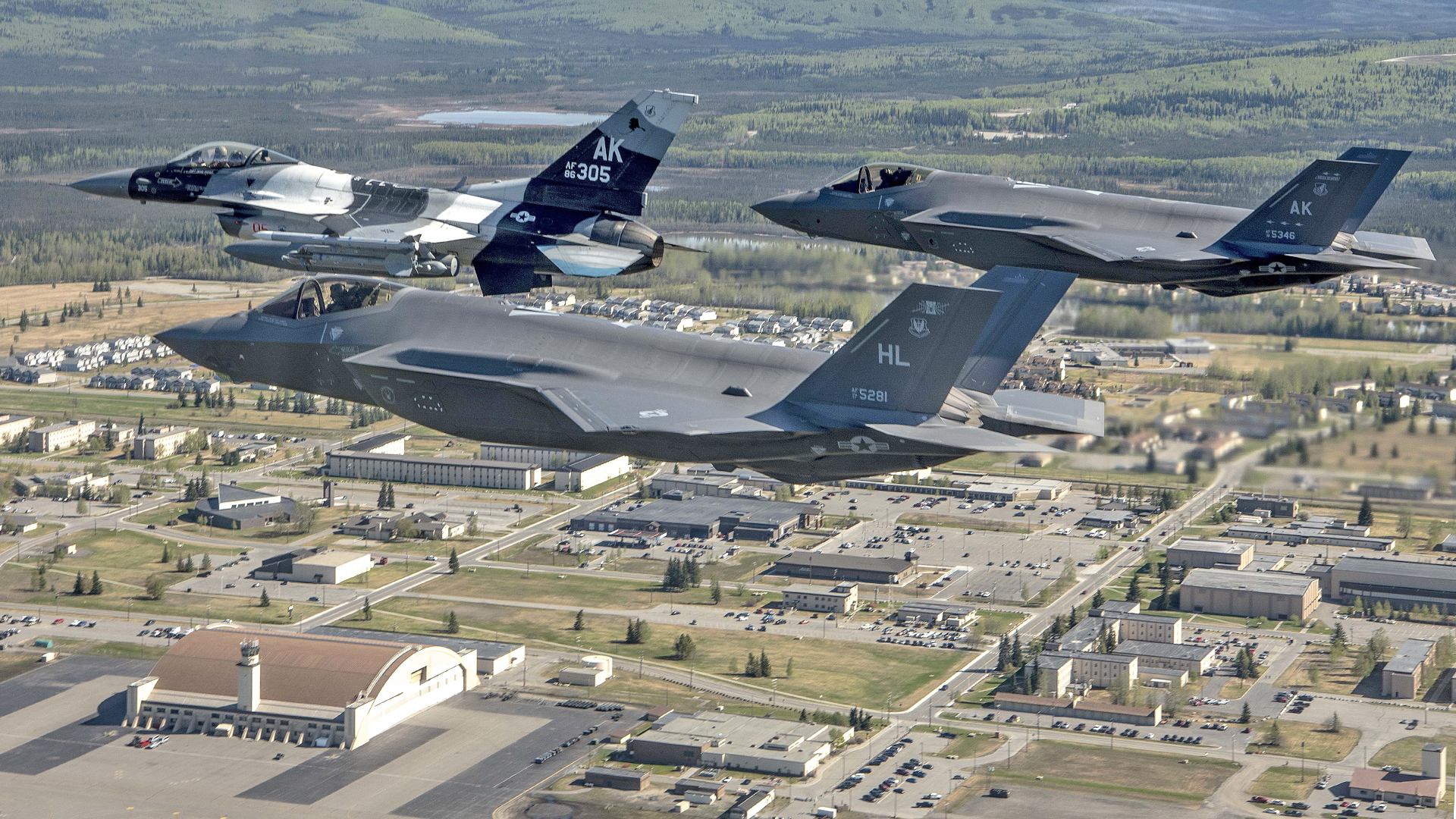
The Arctic assumes greater strategic importance
The USAF unveiled its Arctic Strategy on July 21, 2020. It outlines the unique regional role and efforts to optimize air and space capabilities in this area. “The Arctic is among the most strategically significant regions of the world today — the keystone from which the U.S. Air and Space Forces exercise vigilance,” said Secretary of the Air Force Barbara Barrett. “This Arctic Strategy recognizes the immense geostrategic consequence of the region and its critical role for protecting the homeland and projecting global power.”
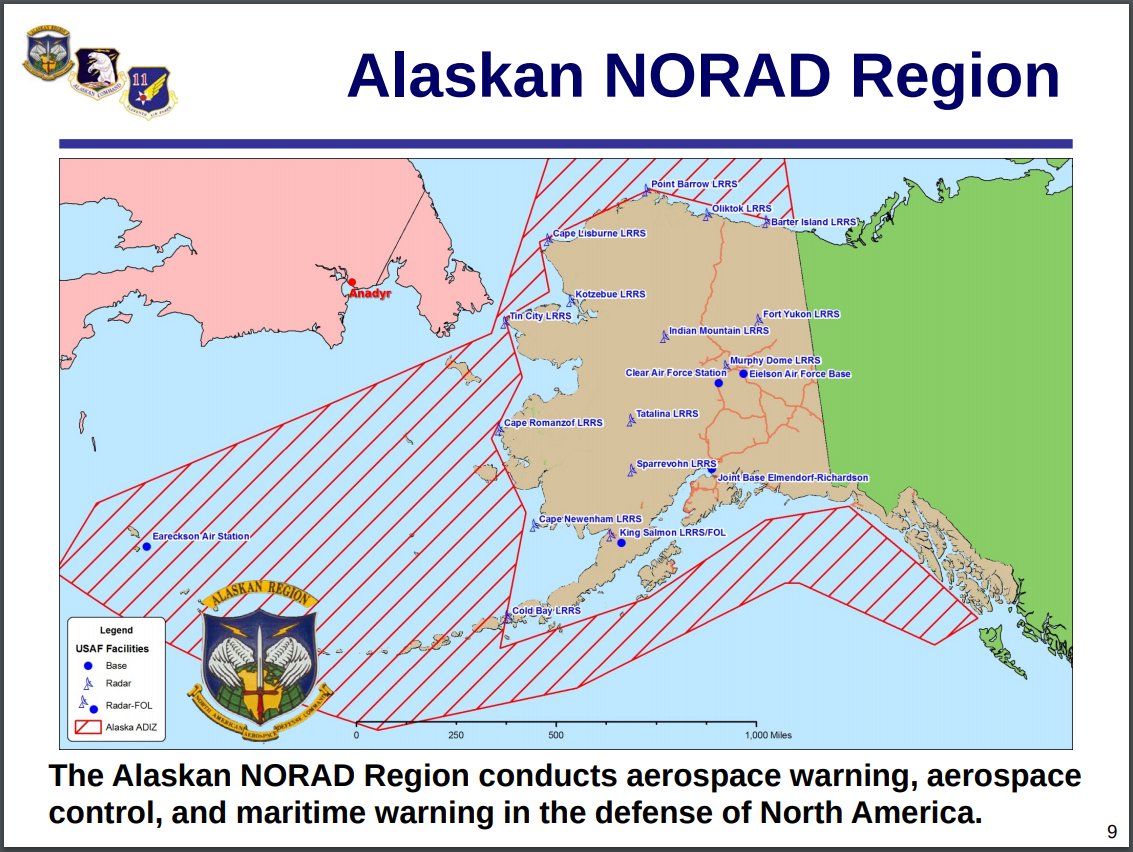
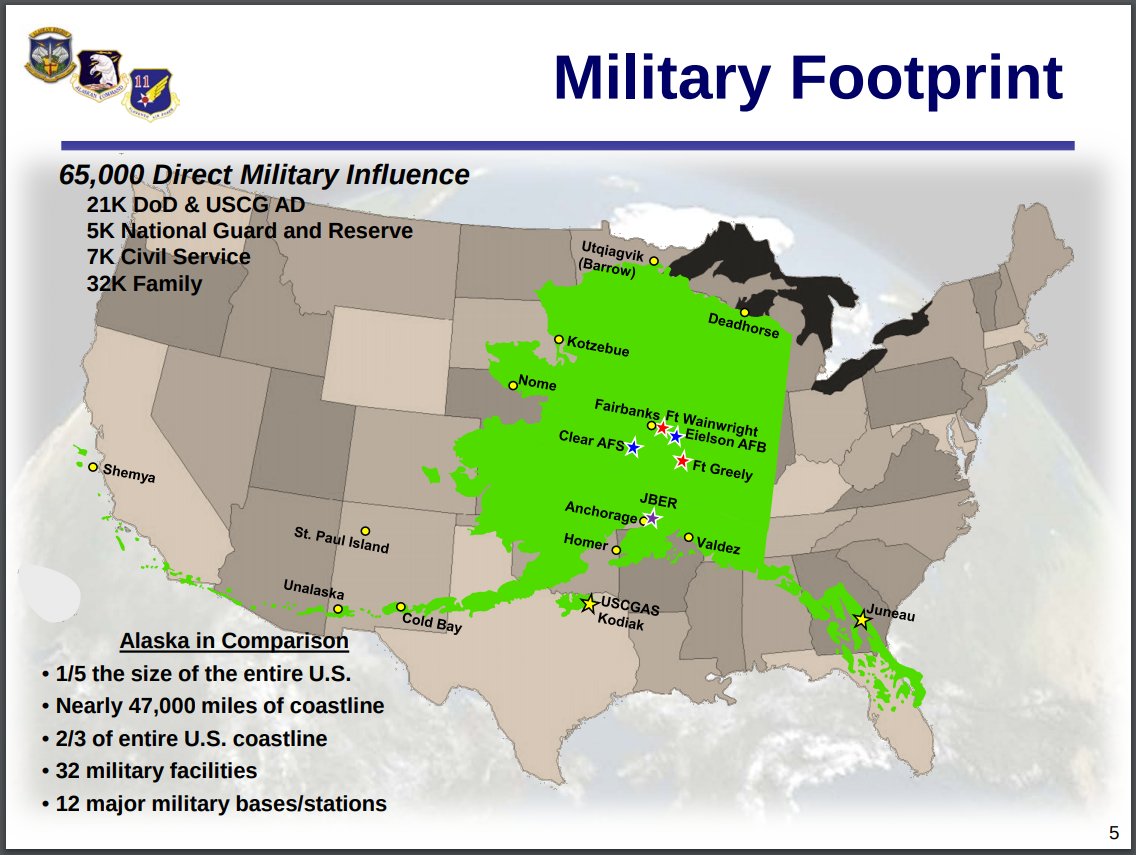
The strategy outlines four main focus efforts: vigilance in all domains, projecting power through a combat-credible force, cooperation with allies and partners, and preparation for Arctic operations. Combining the combat capability of 5th generation fighters in Alaska with the reach afforded by an organic force of tanker aircraft provides an impressive means to project air power. Eielson’s F-35s will be able to reach the Asia-Pacific or European theaters with relative ease.
“While the often harsh weather and terrain there call for appropriate preparations and training, Airmen and Space Professionals remain ready to bring the nation’s Arctic air and space assets to bear to support the National Defense Strategy and protect the U.S. homeland,” said Barrett.
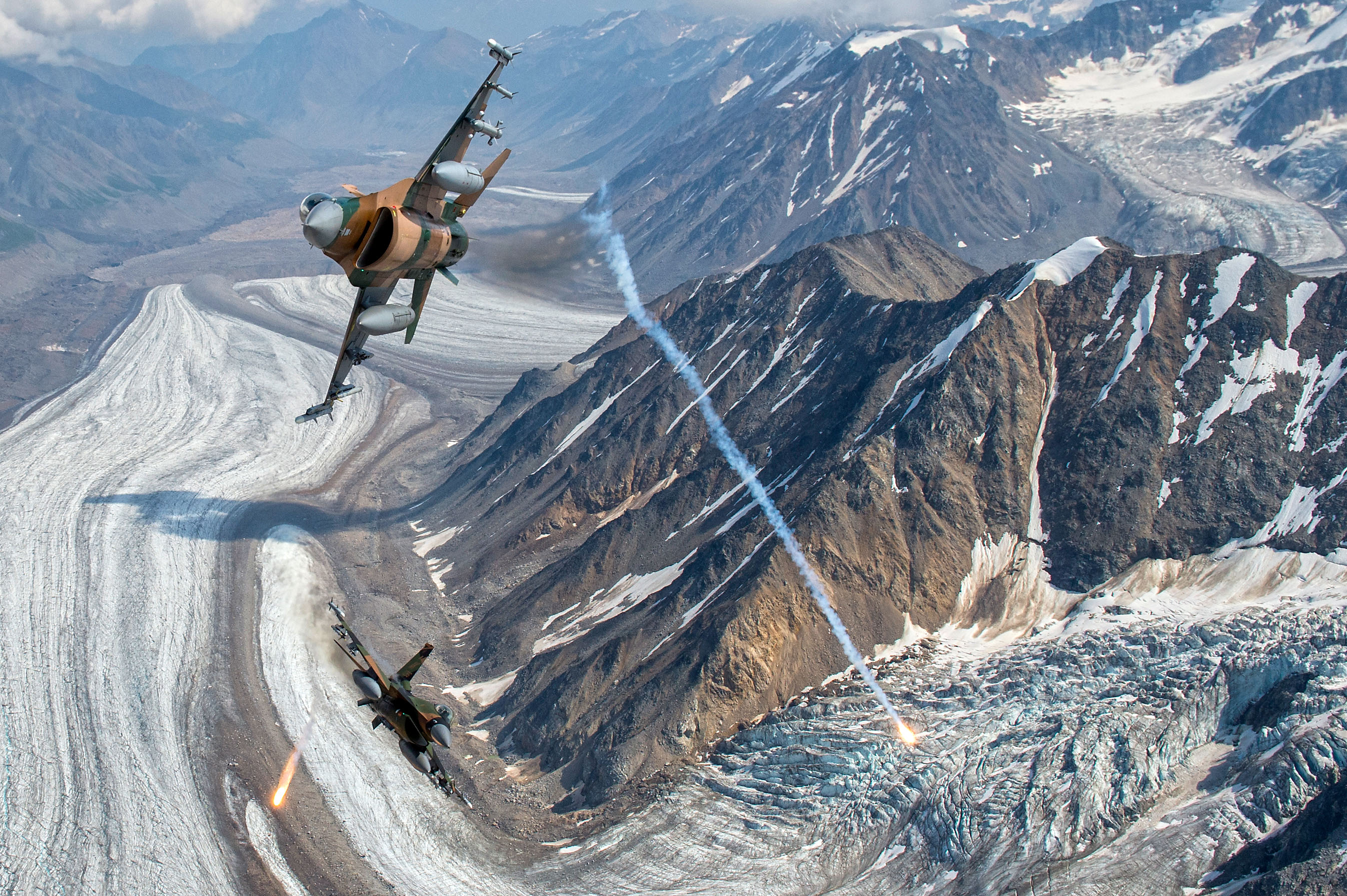
Bringing the F-35 to the Arctic
Eielson was announced in April 2016 as the first operational USAF location outside the contiguous United States (CONUS) to receive the F-35A. It followed an exhaustive analysis of the base’s facilities, environmental factors, and cost. But pairing the F-35 and Eielson has been far from straightforward. The extreme winter weather conditions are the toughest yet faced by the USAF’s latest fighter.
With the weather dropping below minus 50 degrees Fahrenheit, combined with snow and dark winter days, this is an extremely challenging operating environment. F-35s were first subjected to cold weather trials in the USAF’s McKinley Climatic Laboratory located at Eglin Air Force Base in Florida in late 2013. A focus on cold-weather testing was also directed at the Royal Norwegian Air Force, with its F-35s expected to regularly operate from snow-covered runways in plummeting winter temperatures. This gave rise to a unique drag chute modification for Norway’s F-35s. This is mounted in a removable pod between the aircraft’s vertical stabilizers. The USAF’s jets bound for Eielson don’t feature the same landing stability modification.
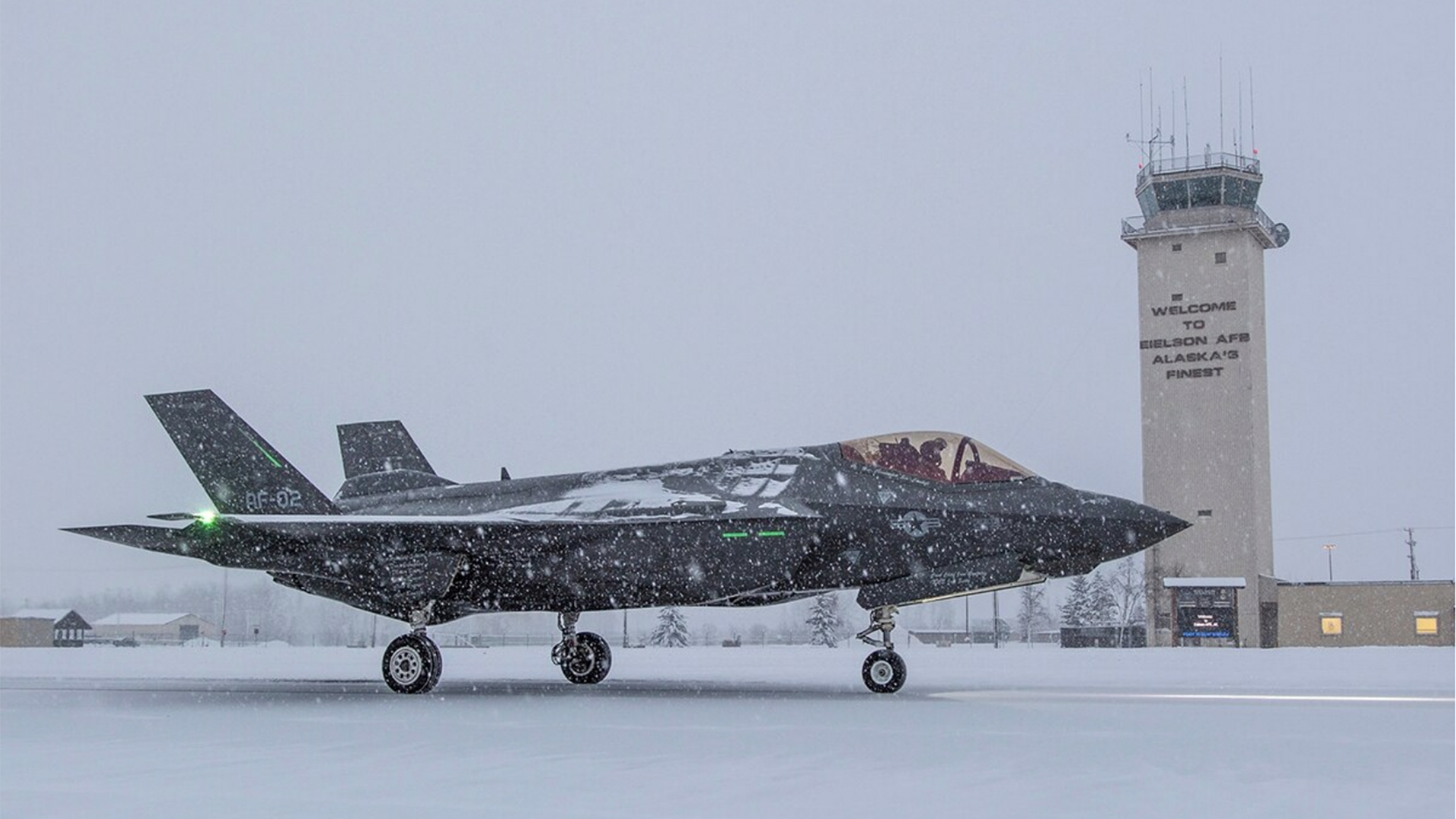
Following initial trials of the drag chute at Edwards AFB in California, an F-35A with the chute attachment was dispatched to Eielson in late 2017 for runway suitability trials. The second period of extreme cold-weather testing was conducted at Eielson in February 2018 as part of the pre-Initial Operational Test and Evaluation work. “We’re here at Eielson to prove the capability of the aircraft to operate under extreme conditions of cold weather,” said Robert Behler, the Director of Operational Test and Evaluation at the Office of the Secretary of Defense.
The multi-flight evaluation in 2018 ran into problems when pilots received warnings that an important battery was failing in flight. It was discovered that the extreme cold affected the battery when the F-35’s nose wheel bay door was open, according to Defense News. This triggered a warning to pilots, which meant they had to land as soon as possible, according to standard operating procedures. The problem was solved in the immediate term via a workaround, with a full software fix following to correct the issue.
Massive infrastructure changes at Eielson to support new F-35s
In addition to ensuring the aircraft themselves were ready for the harsh northern environment, the base infrastructure at Eielson was also in need of major upgrades in order for it to be able to support the incoming fighters.
The arrival of the F-35s required a major expansion in support facilities at the base, as well as housing to accommodate a huge influx of personnel. Significantly, the arriving aircraft are not recapitalizing other departing assets. Moreover, the stealthy F-35s require significant bespoke facilities to meet security and environmental requirements. Bringing the F-35 to Eielson required huge investment and a lot of new construction.
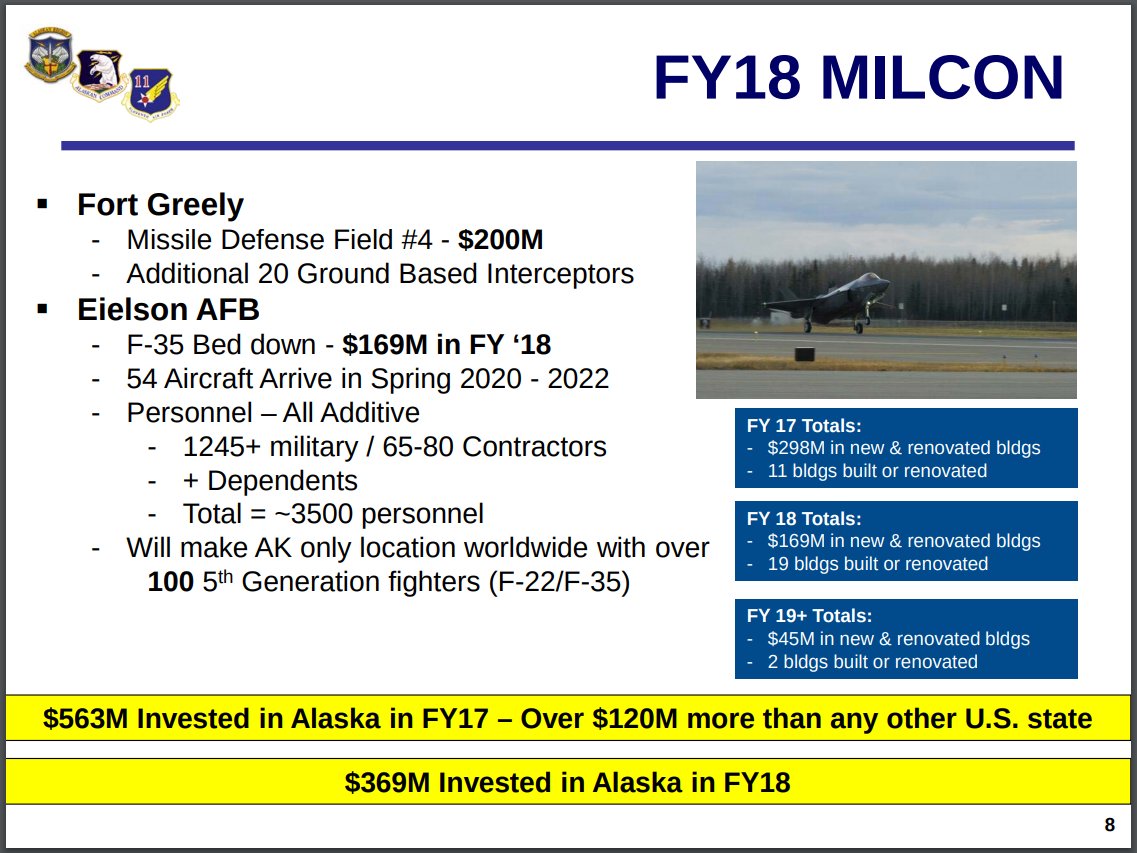
The Department of Defense asked Congress to fund seven major construction projects at Eielson in the fiscal year 2017. It was the start of a huge effort to support expected population growth of nearly 50 percent at the base as 1,250 active-duty personnel relocated here. By the end of 2021, the number of Airmen at Eielson is expected to rise to 3,250.
The Alaska District of the U.S Army Corps of Engineers is the primary design and construction agency for the massive new facilities to accommodate the two new F-35 squadrons and the men and women that will support them. It is overseeing the reconstruction of 32 new buildings and the significant refurbishment of other structures that equates to more than 420,000 square feet of infrastructure, with an associated price tag of over $500 million.
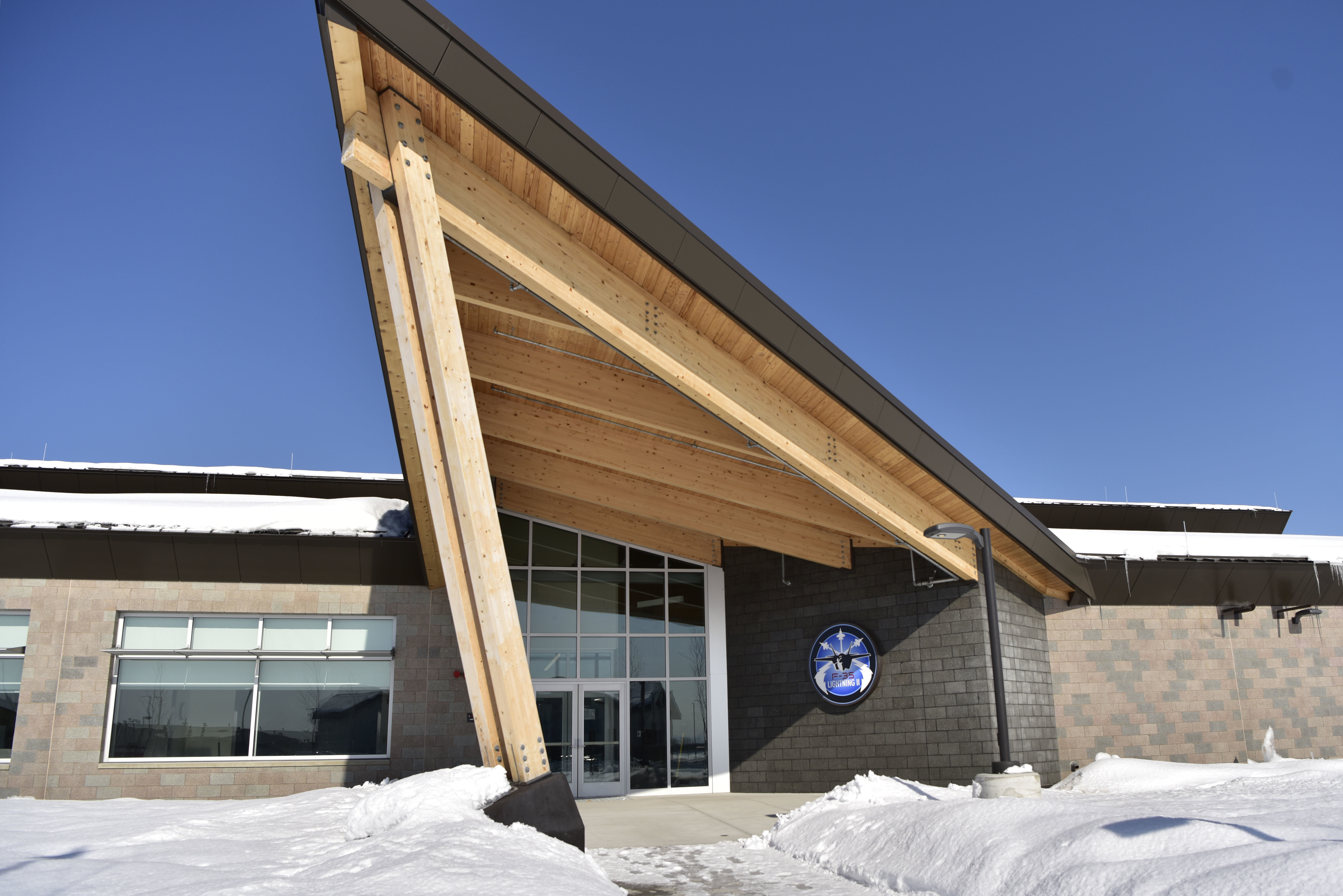
The Senate’s 2017 spending bill included $563 million in military construction projects throughout Alaska. It received a larger share of the 2017 military construction budget than any other state.
At the heart of the development work are two huge new F-35 weather shelters that include 16 bays, each of which can accommodate one aircraft. These shelters are planned to house all aircraft that are available for daily operations across the two squadrons. As well as providing a welcome refuge for the aircraft, the weather shelters are vital to providing maintainers with insulated and heated space to work in through the cold winter months.
You can examine a full high-resolution copy of the entire satellite image of Eielson AFB that The War Zone obtained here. The one below is a reduced resolution version.
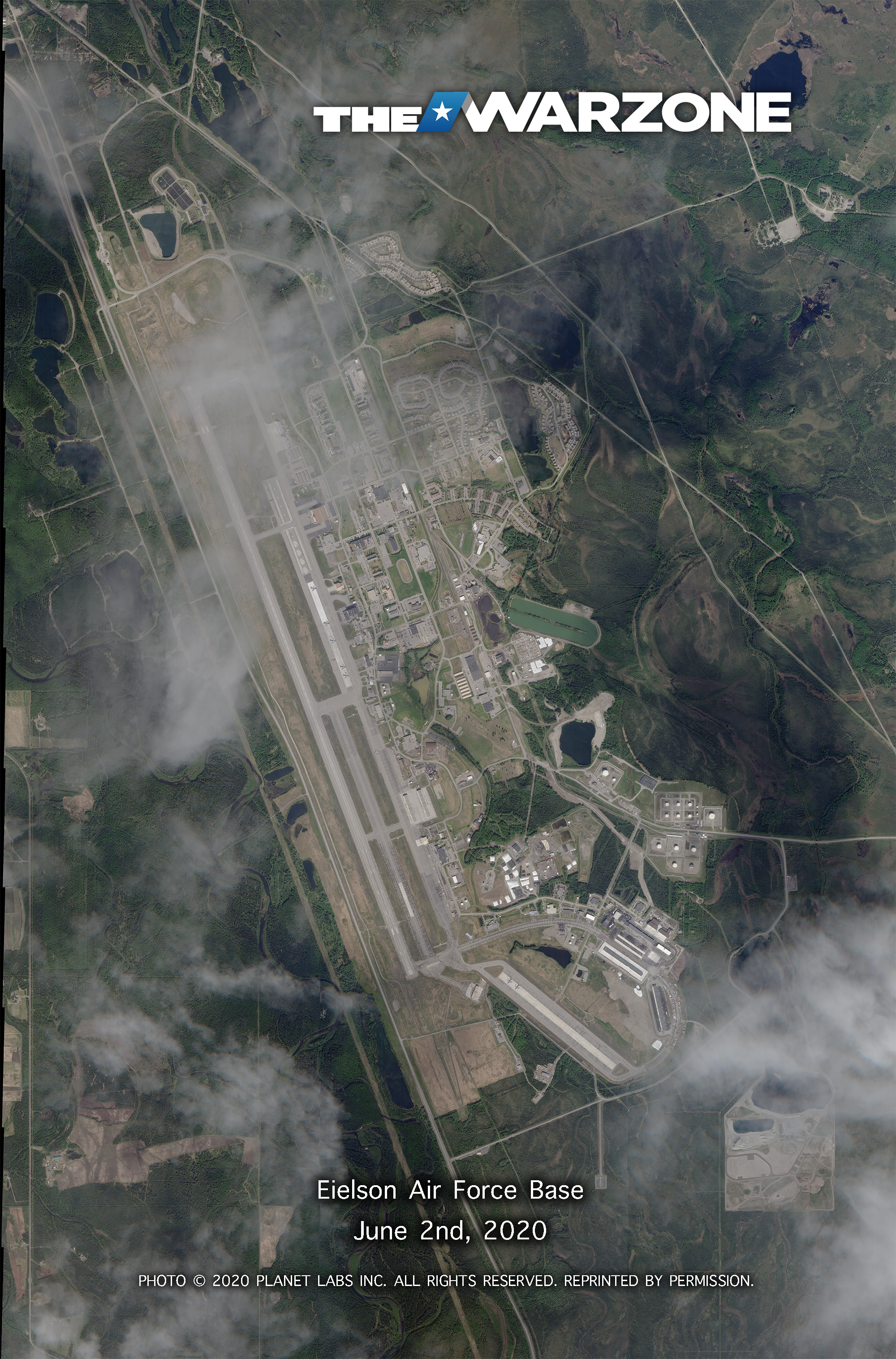
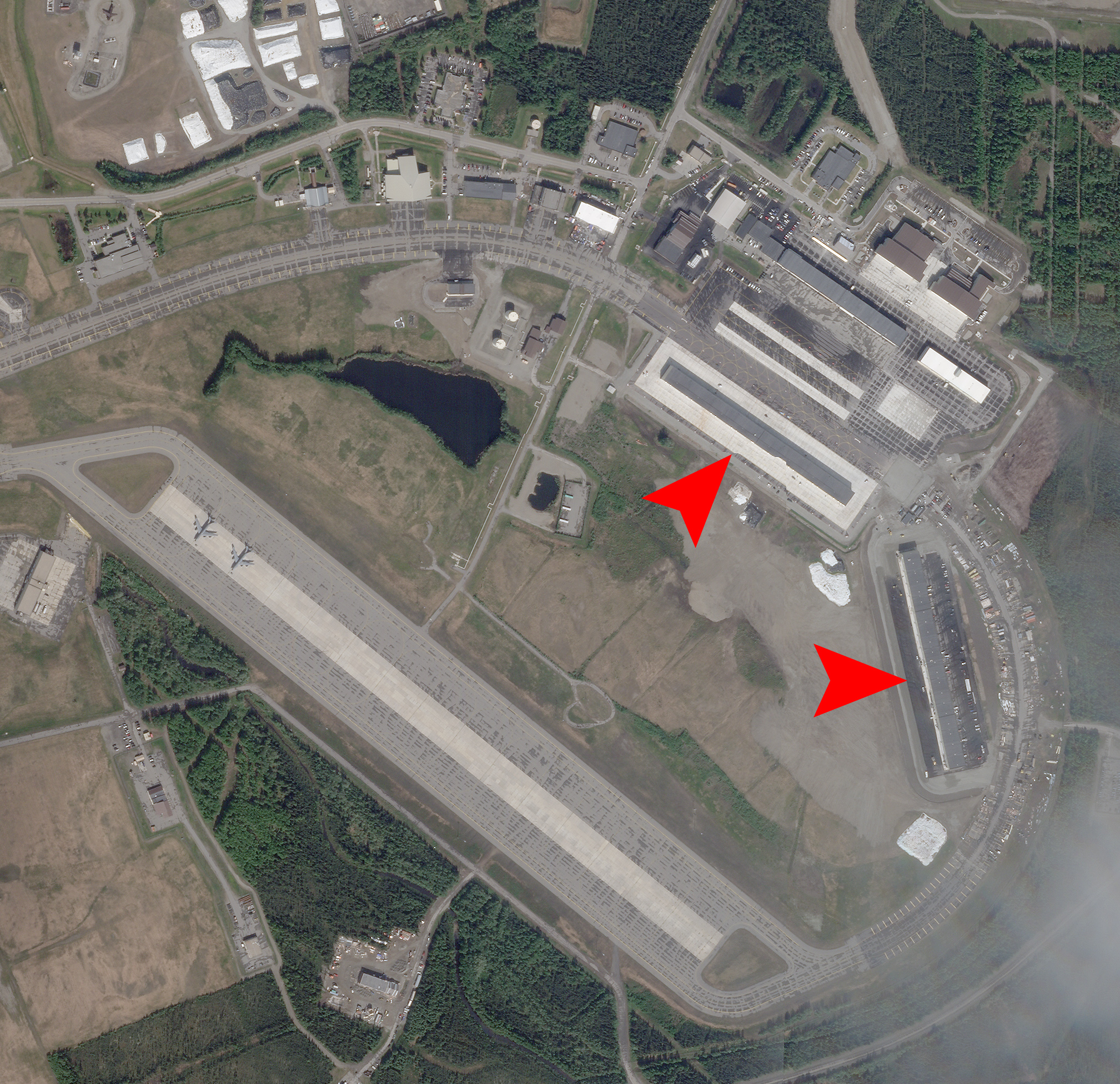
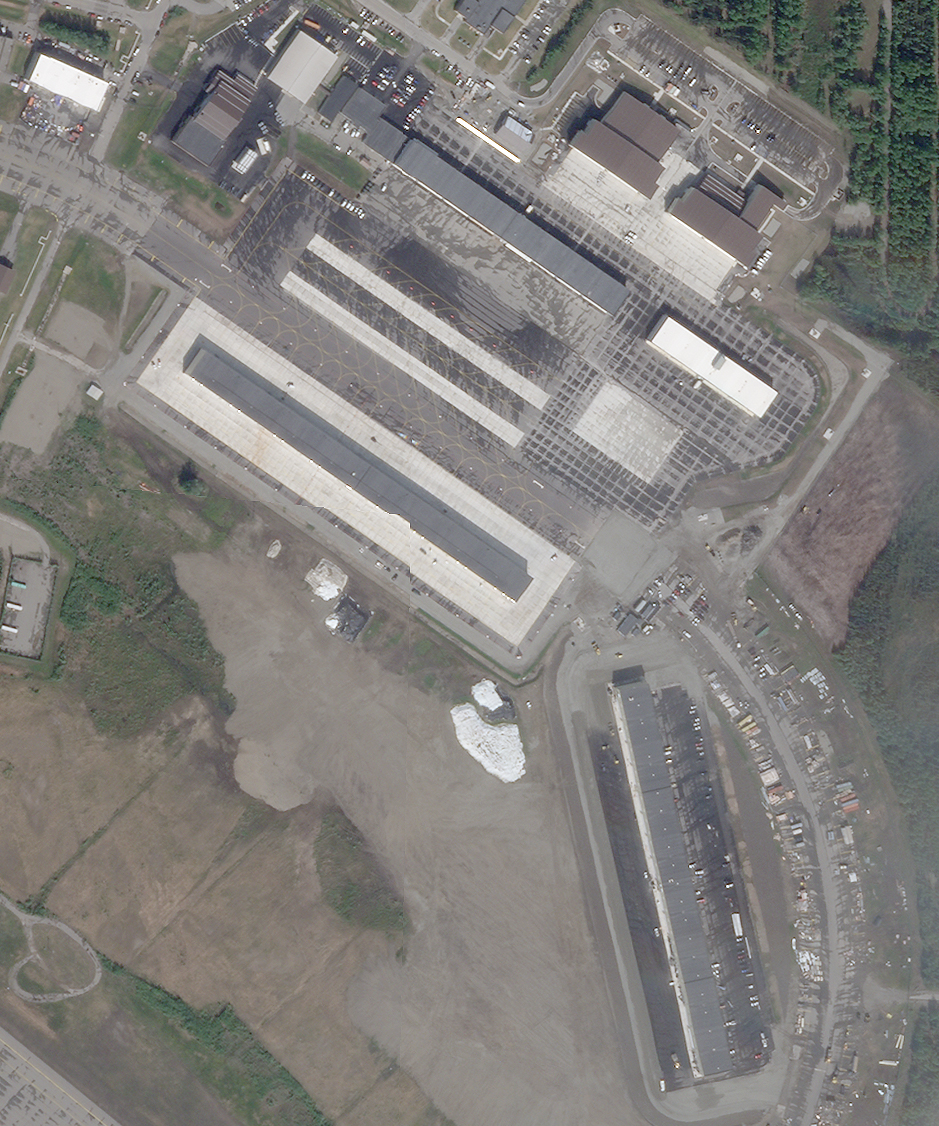
A Senate subcommittee approved $298 million for Eielson construction work during the 2017 fiscal year. A firm-fixed-price contract was awarded to Watterson Construction in January 2018 to design and construct the first of the $58 million weather shelters for the 356th Fighter Squadron, with completion set for November 2019.
Contracts also included the refurbishment of an existing 8-bay weather shelter, previously used by the resident 18th Aggressor Squadron, and the overhaul of Aircraft Maintenance Unit (AMU) facilities. In addition, Coffman Engineers was contracted to upgrade an existing 4-bay hangar. The facility was previously used for general maintenance of F-16s and has been repurposed hazardous maintenance activities to support fuel cell maintenance for the F-35As.
A further $169 million was appropriated in fiscal 2018, and $45 million in fiscal 2019. The House funding bill initially included money for only one weather shelter, however as can be seen in new satellite imagery The War Zone obtained from Planet Labs, seen above, the second is nearing completion. This work is also being undertaken by Watterson Construction following a contract award on June 5, 2018. According to the contract notification, a weather shelter for “squadron 2” was scheduled to be completed by July 23, 2020.

Operations begin
Alaska will be the most concentrated state for combat-coded, 5th generation fighter aircraft. “When you station the F-35 at Eielson and you have the F-22 Raptor down at Joint Base Elmendorf-Richardson, working together in the JPARC [Joint Pacific Alaska Range Complex] with our 18th Aggressor Squadron and ground training assets, you have the perfect training field for the F-35 to develop,” said Colonel Benjamin Bishop, the former 354th Fighter Wing commander.
The availability of the JPARC is one of the most important factors in exploiting the full potential of the assembled assets in Alaska. Recently expanded to 77,000 square miles of airspace, this massive restricted area provides a realistic training environment and allows commanders to train for full spectrum engagements, ranging from individual skills to complex, large-scale joint engagements.
JPARC 2025 is an initiative designed to ensure the airspace is optimized for the arrival of the F-35s. “The JPARC will have more 5th generation fighter squadrons stationed locally than any other range,” said Lieutenant Colonel John Anderson, the 353rd Combat Training Squadron commander. “If we’re going to have an opportunity like that, we need to capitalize on it and prepare the training venue for those fifth-generation squadrons. Not just for the local squadrons, but also for temporarily-deployed units from sister services and international partners as well.”
You can examine a full high-resolution copy of the entire satellite image of Eielson AFB that The War Zone obtained here. The one below is a reduced resolution version.
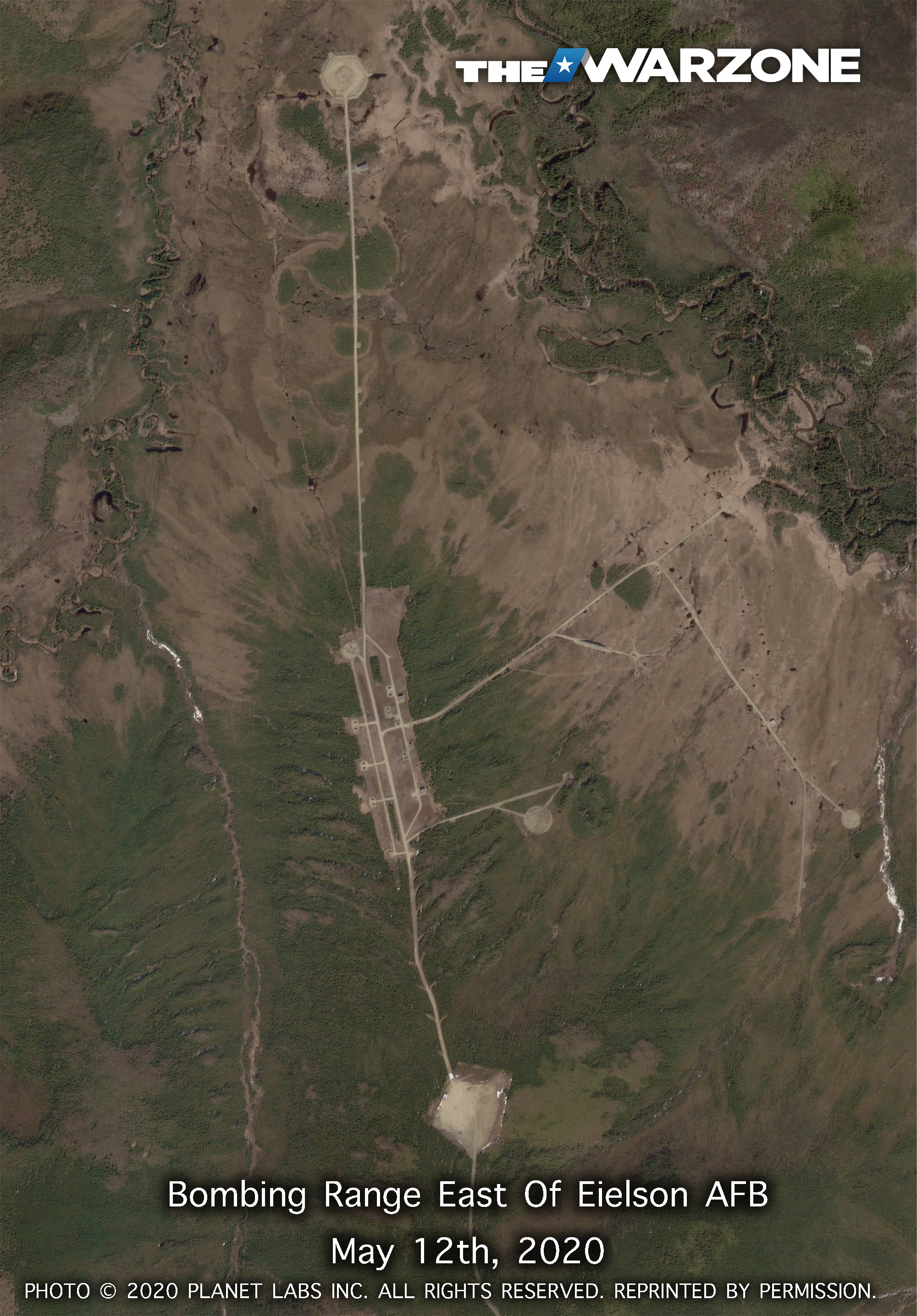
The arrival of the first two F-35s at Eielson on April 21 was closely followed by the start of local flying three days later. Four jets from the 388th Fighter Wing at Hill AFB were added on April 27 as a temporary measure to increase capacity at the 354th Fighter Wing for two months.
By the end of June, six 354th-owned F-35s had arrived at the base and the jets were slated to continue arriving from Lockheed Martin at a rate of 2 to 3 aircraft per month. However, in the background, the build-up was being hampered by the ongoing COVID-19 pandemic.
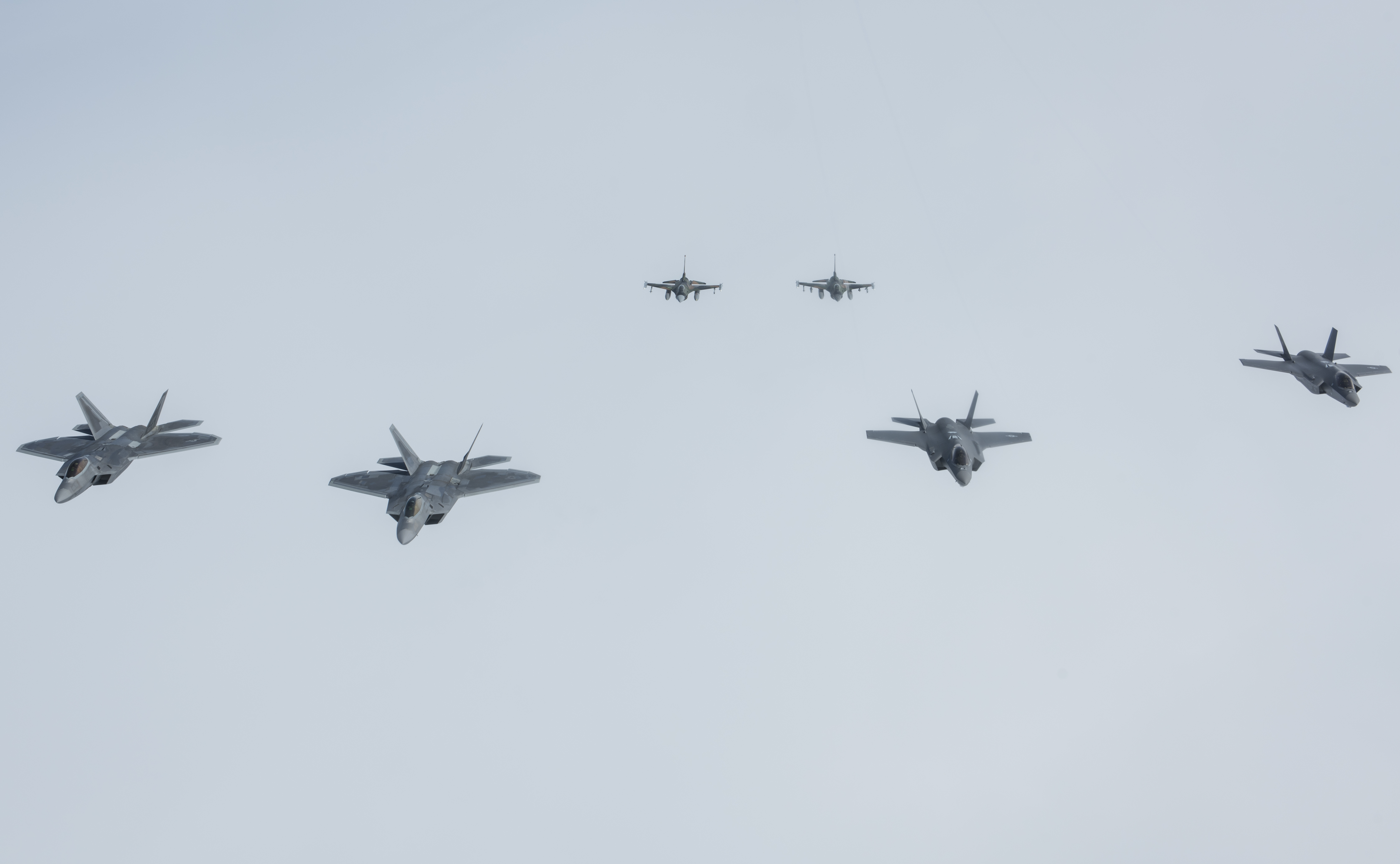
According to a report by Defense News, the Defense Contract Management Agency (DCMA), an organization charged with delivering new F-35s to customers, was drafted to deliver aircraft to Alaska. It removed the need for 354th FW pilots to step away from local operations and exposure to COVID-19 risks, according to Lt Col James Christensen, the 356th Fighter Squadron commander.
The pandemic meant the DoD put a stop-movement order on personnel that ran until June 30, however sufficient maintainers were already in place at the 354th FW to support the buildup of F-35 operations over the summer. According to the Defense News report, pilots and maintainers going through the training system have been granted a blanket exception to transfer to Eielson.
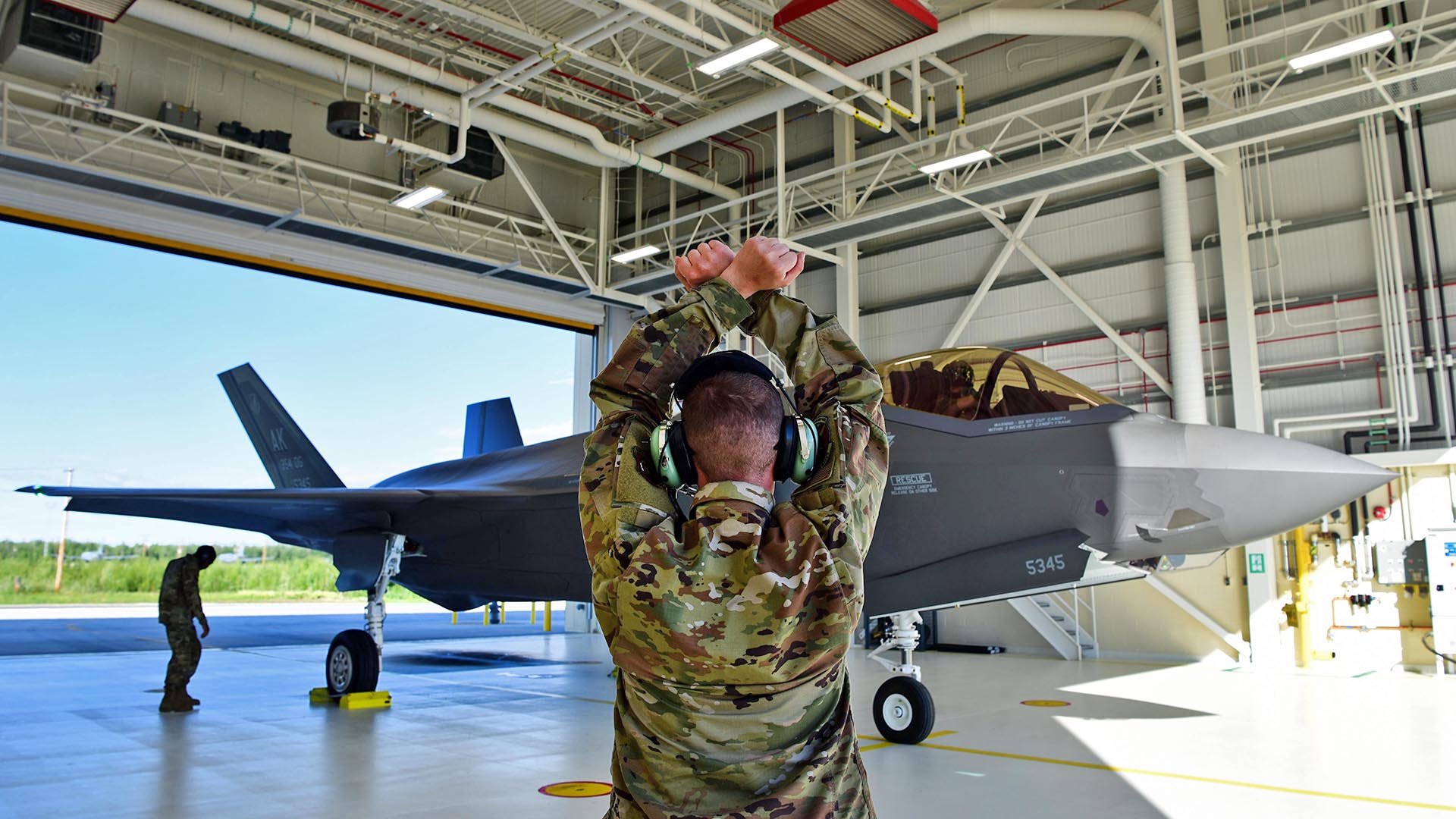
Moreover, other potential COVID-19 concerns loom. Speaking at the Virtual Farnborough Air Show on July 22, Lockheed Martin’s Vice-President of F-35 production Darren Sekiguchi said the company expects supply chain issues to lead to production delays of approximately 2-3 months at the Fort Worth, Texas, assembly line. This could have an impact on 18 to 24 deliveries of the 141-target scheduled for this year. Sekiguchi said the company expects to return pre-COVID-19 production levels by the late summer/early fall. It’s unclear how and if this will impact deliveries to Eielson.
The next big focus for the Eielson F-35s is Red Flag Alaska, which will kick-off in August. It will be an initial high-end warfighting test for the new F-35 wing as it ramps up flights from its big new flight operations center. While it won’t feature bitterly cold winter weather, it will provide an initial test for the capabilities of the 354th Fighter Wing as it seeks to stamp its mark on this increasingly critical region with its new F-35s.
Contact the author: Jamie@thedrive.com
